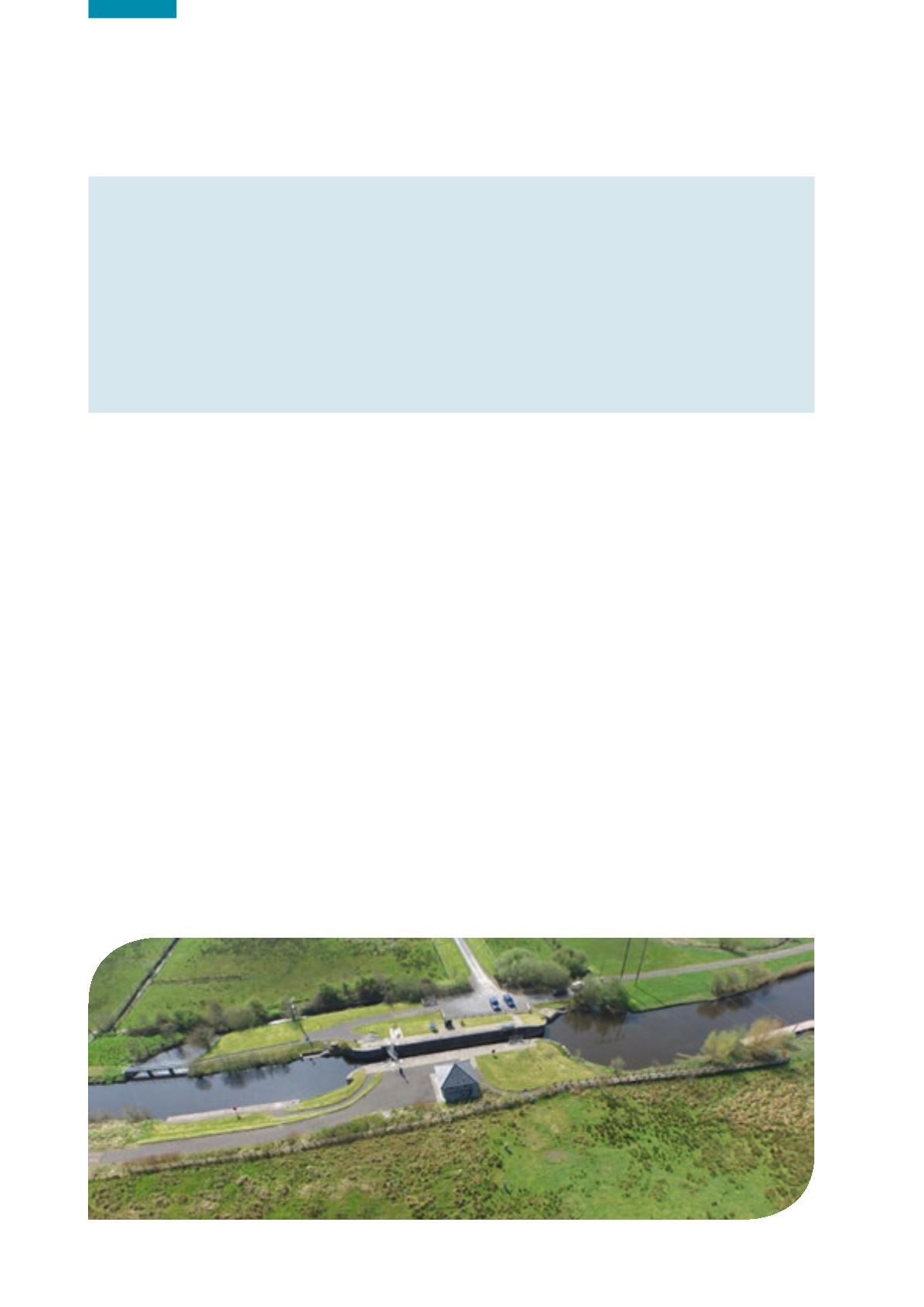

Ireland’s Environment – An Assessment 2016
116
National Peatlands Strategy
The National Peatlands Strategy is a key strategy that
establishes the framework for the future use of our bogs.
The National Peatlands Strategy sets out the actions
required and partners responsible for its management and
implementation. In 2015, Bord Na Móna (BNM), one of
the strategy partners, announced its intention to cease
peat harvesting activities by 2030 and focus on supplying
renewable energy. It is also notable that between 2009
and 2014, BNM restored 1,136 ha of drained raised bog
(BNM, 2015). In 2016, BNM launched its Biodiversity
Action Plan 2016‑21, which supports the ongoing
restoration and management of peatlands.
Identification and Clean-up of
Contaminated Land
EPA-licensed sites are required to implement aftercare
provisions closure to remove any remaining residual soil
contamination.
Appropriate financial provisions may also be required
for some licensed sites to ensure that any residual
contamination is appropriately managed. The WFD
also requires measures to be taken where identified
contaminated lands pose a threat to water quality.
Agriculture
Agriculture polices could have a significant bearing on
land use in the future.
Food Wise 2025 includes many sustainability-related
actions to improve the environmental footprint of
the agriculture sector. A wider discussion of this
topic and the related environmental challenges is
presented later in this report. By fully implementing the
environmental-related elements of Ireland’s National
Rural Development Programme 2014‑2020, adverse
environmental effects (including on soils, water quality,
etc.) can be minimised.
The EU Common Agricultural Policy and schemes such
as Agri-Environmental Option Schemes, for example,
encourage farming practices that maintain soil fertility
and levels of organic matter. Teagasc’s SQUARE Project
is developing a toolbox for farmers to use to assess soil
structural quality, soil functional capacity/quality and
impacts of soil structural degradation on its functional
capacity. This will be a useful management tool to
minimise nitrogen and phosphorus losses.
A consistent landscape characterisation framework approach at a national level to inform planning authorities
is required. An increased awareness of landscape matters, community participation and the establishment of
a consistent methodology to assess, monitor and report on the state of landscape are also recommended. By
integrating the NLS into land use planning, sustainable landscape management practices can be progressed.
According to the Heritage Council, the implementation of the NLS should prove to be a turning point in landscape
awareness and management. The development of bespoke agri-environmental (locally led) schemes aimed at
promoting high-nature-value farming and the development of landscape partnerships, with support under future leader
programmes or from national agencies, may also become a growing trend. In keeping with the emphasis placed by the
ELC on public participation, the development of Local Authority Public Participation Networks (PPNs) and participative
processes, such as community-led village design statements, coupled with the United Nations Economic Commission for
Europe (UNECE) Aarhus Convention and its adoption in domestic legislation and policy, are likely to shape future trends.


















